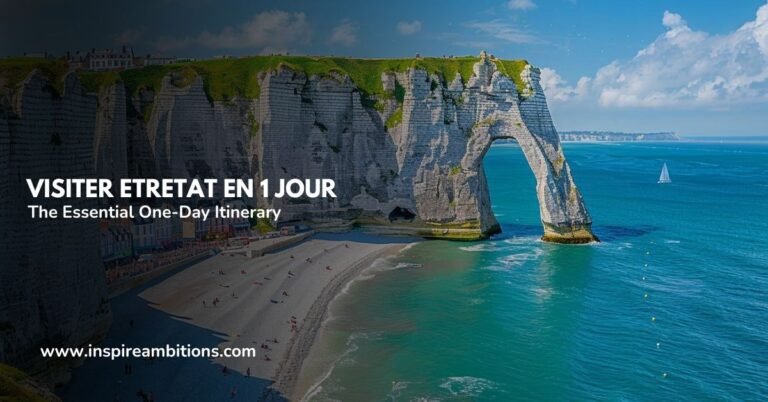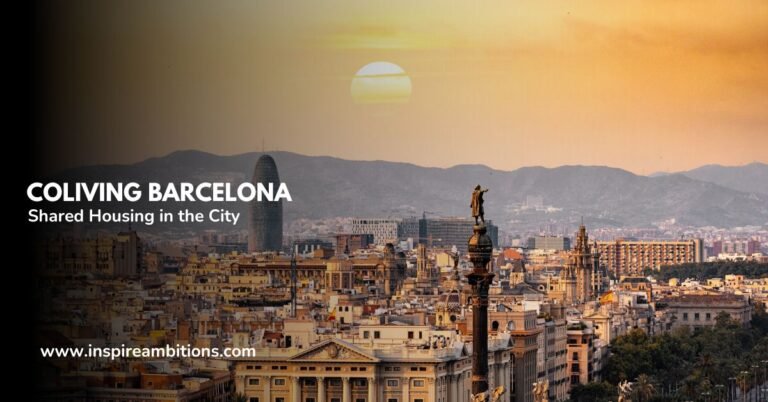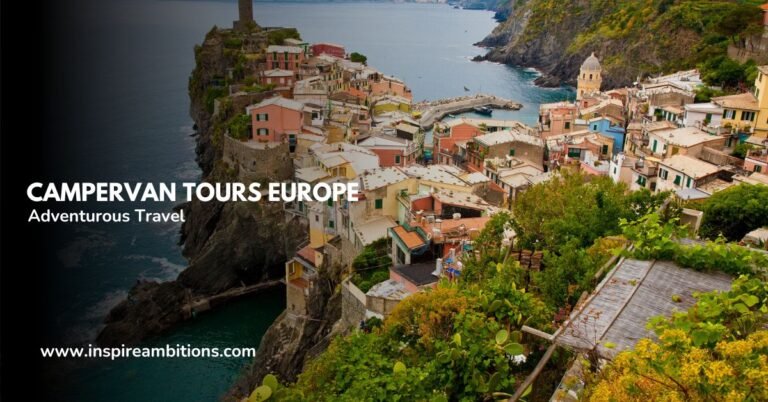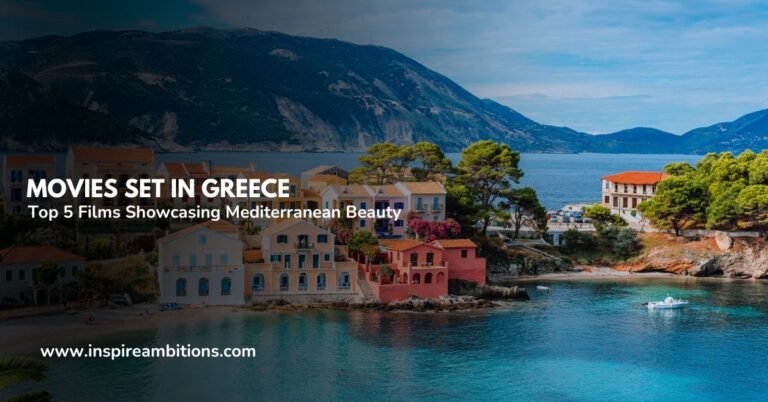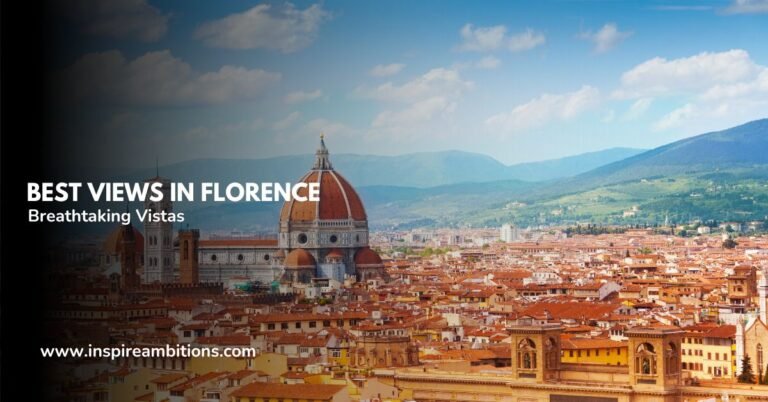Circuits Europe WW2 – Explorez les champs de bataille et les monuments historiques
Travelling through Europe on a World War II tour offers a profound experience. Over seven decades ago, the conflict that ravaged this continent left indelible marks that are best understood by walking the battlefields, visiting the memorials, and reflecting at the cemeteries.
These tours provide an immersive look into the past, engaging visitors with the era’s historical significance and human stories.
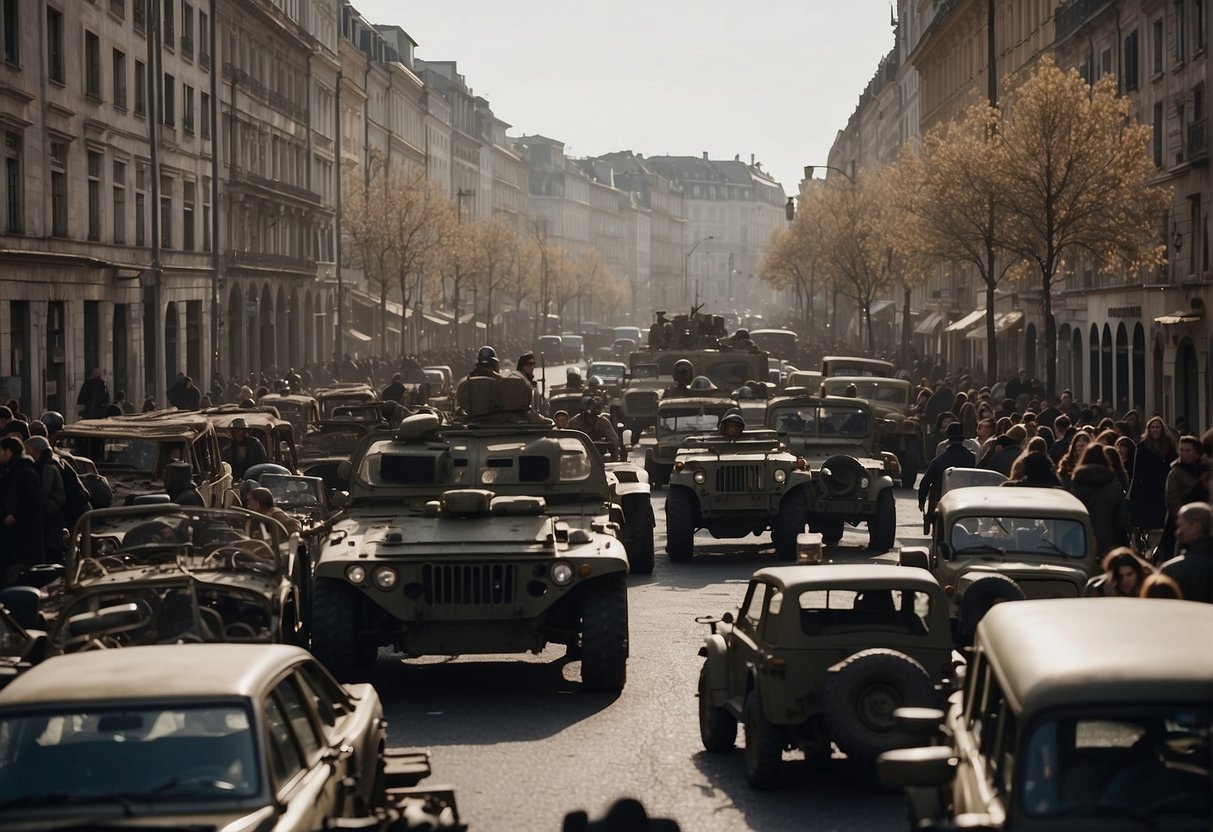
Tours generally encompass vital sites such as Normandy’s beaches, infamous for the D-Day landings, and the sombre American Cemetery at Colleville-sur-Mer. The impact of WWII is evident beyond France, with tours extending to Britain, Belgium, Germany, Austria, the Czech Republic, and more.
Each stop presents an opportunity to unravel wartime Europe’s rich and often poignant tapestry, bringing history to life through expert insights and meticulously preserved locations.
Europe WW2 Tours – Key Takeaways
- WWII tours offer immersive historical experiences across Europe.
- Visits to battlefields and memorials in countries like France bring history to life.
- The tours provide educational insights, engaging travellers with the stories of WWII.
Historical Context of WWII in Europe
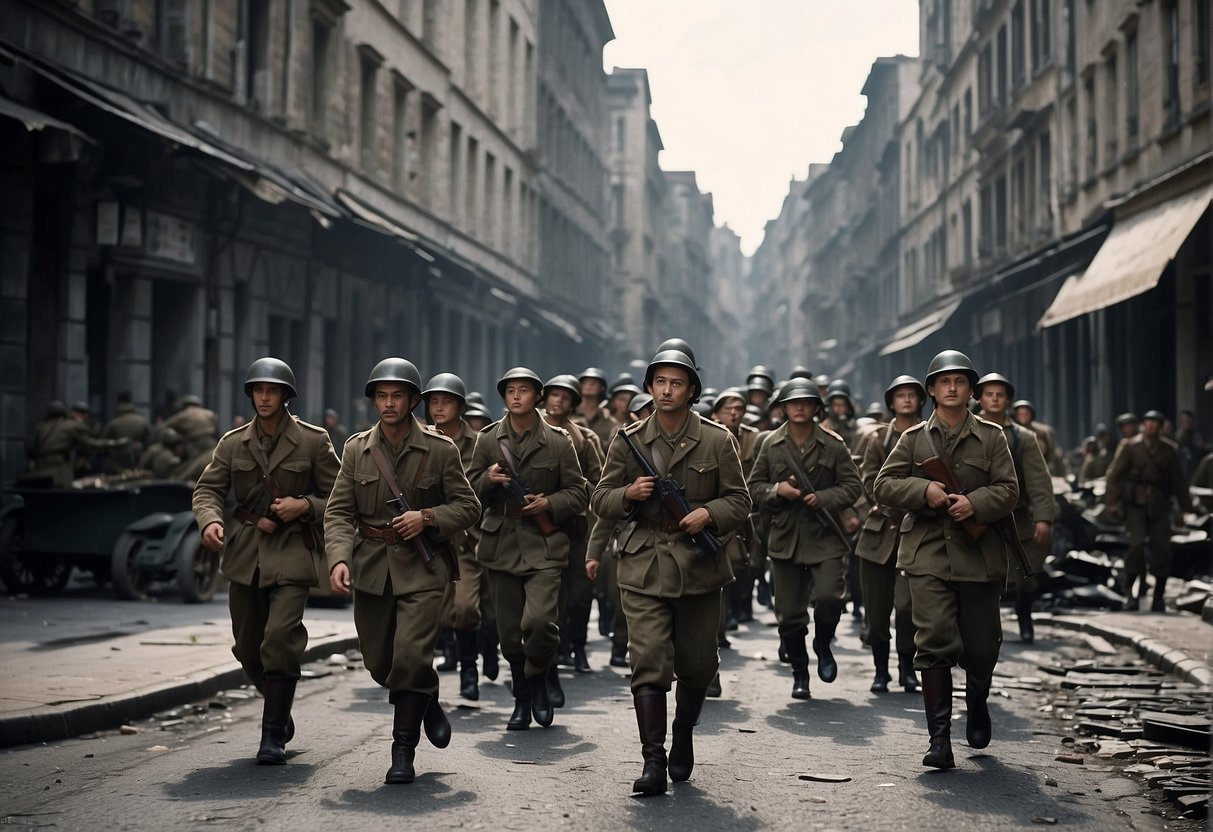
Prelude to War
The seeds of World War II were sown in the aftermath of the First World War. The Treaty of Versailles placed heavy reparations and territorial losses on Germany, contributing to economic hardship and political instability. Amidst this turmoil, Adolf Hitler and his Nazi Party rose to power, promoting a fierce nationalism and xenophobia.
The Rise of the Axis
Germany, under Nazi rule, aimed to expand its territory. It annexed Austria and invaded Czechoslovakia, acts which were met with diplomatic opposition but no military intervention from the other European powers. These early conquests set the stage for a war encompassing much of Europe.
Key Entities:
- L'Europe : The central theatre of conflict.
- Histoire: Shaped by the Treaty of Versailles and the rise of totalitarian regimes.
- World War II: A global conflict from 1939 to 1945.
- Nazi Party: The ruling political faction in Germany, led by Hitler.
- Hitler: The Führer of Nazi Germany whose policies and invasions started the war.
- Allies: The coalition opposing the Axis powers, including the U.K.
- Nazis: Members of the Nazi Party.
- World Wars: The two significant global conflicts of the 20th century.
The Conflict Ignites
Germany’s invasion of Poland in September 1939 forced Britain and France to declare war on Germany, marking the beginning of World War II. The Allies, including the U.K., the Soviet Union, and the United States, faced Axis powers led by Germany, Italy, and Japan. The war lasted until 1945, featuring critical battles throughout Europe.
Essential WWII Sites and Tours in France
In France, several key World War II sites offer profound insights into the monumental events of the past. Tours are available that provide detailed historical contexts for the events that unfolded across these landscapes.
Normandy and the Iconic D-Day Beaches
Normandy is hallowed ground for many, with beaches such as Omaha and Utah symbolising the monumental efforts of Allied forces during D-Day. Tours often include visits to:
- Pegasus Bridge: The first site liberated by British airborne forces.
- Pointe du Hoc: A critical high point between Utah and Omaha beaches.
- Longues-sur-Mer: Featuring well-preserved German artillery bunkers.
- Arromanches: Close to the remains of the Mulberry Harbour.
Le American Cemetery at Colleville-sur-Mer is a poignant reminder of the sacrifices made and is a standard inclusion in battlefield tours.
The Liberation Route and Battle of the Bulge
Follow the path that the Allies took to liberate Europe. Notable sites include:
- Bastogne: Vital during the Battle of the Bulge, with memorials like the Mardasson Monument honouring those who fought.
- Ardennes: Explore the WWII trails where the Battle of the Bulge took a decisive turn.
Consider visiting the town of Luxembourg, where many tours explore the involvement of Easy Company, made famous by the “Band of Brothers”.
Remembrance and Museums
Museums provide invaluable context on the history and impact of WWII. Noteworthy destinations:
- Caen Memorial Museum: Chronicles war’s complexities and the intensity of the Normandy campaign.
- Airborne Museum: Dedicated to the U.S. airborne divisions, located in Sainte-Mère-Église.
- National Museum of Military History: It has comprehensive exhibits located in Diekirch, Luxembourg.
Paris and Surrounding Historical Sites
Paris itself was a crucial location during WWII, and historical tours may involve:
- The Liberation of Paris Museum: Documenting Paris’ journey through occupation to liberation.
- tour Eiffel & Arc de Triomphe: While not battlegrounds, these landmarks endured the war and are steeped in history.
UN Seine River cruise can offer a unique vista of Parisian landmarks, sharing untold wartime-era stories.
Exploring WWII Heritage in Other European Countries
European countries offer a diverse World War II history tapestry, from battle sites to memorials. Your journey through these historic locales across the Netherlands, Belgium, Germany, Austria, and the U.K. will bring you closer to the impactful stories and the legacies of those involved.
Battle Sites and Memorials in the Netherlands and Belgium
The Netherlands and Belgium serve as poignant reminders of WWII’s extensive reach. Your exploration could include:
- Operation Market Garden is notable in Nijmegen and Arnhem, with its daring airborne landings.
- Le Waal River bridges strategic points during the operation.
- In Belgium, remembrance is palpable at Antwerp, which has sites critical to the Allied supply lines.
- Visiter le Airborne Museum in the Netherlands, where the legacy of paratroopers is honoured through rich displays and narratives.
These sites memorialise the war’s braveness and tragedy, offering a sad background to understand the magnitude of the conflict.
Germany and Austria: From Dachau to Nuremberg
The poignant legacy of the Holocaust and the war’s political aftermath are deeply rooted in Germany and Austria. Key sites include:
- Camp de concentration de Dachau, near Munich, is a sobering reminder of the horrors of the Nazi regime.
- Le Palace of Justice in Nuremberg is where prominent war trials were held.
- Munich’s Nazi Party Rally Grounds, bearing witness to the chilling propaganda.
Travelling through Bavaria, history unfolds as you tread the locations where significant WWII narratives unfolded.
WWII’s Impact on the United Kingdom and Contributions
The United Kingdom speaks volumes through its WWII sites:
- Londres exhibits the scars of the Blitz and celebrates the resolve of its citizens.
- Museums and monuments dedicated to U.S. soldiers and American paratroopers display the alliance and efforts for liberation.
- Un overhead flight in a vintage plane offers an immersive experience of the era.
These historic spaces remind you of the U.K.’s substantial role in leading to the eventual peace.
Remember, each country retains a distinct narrative within the larger context of World War II. As you travel, reflect on the history and consider the impact of these events on present-day Europe.

